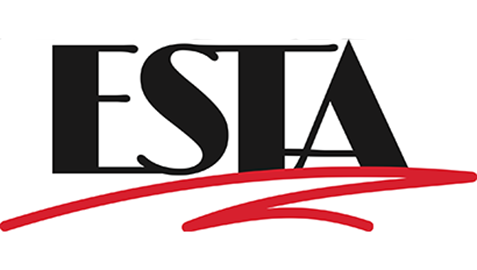 Seven documents — six draft standards and one informational book — are posted on the ESTA Technical Standards Program (TSP) website for public review through April 8, 2019. All are available at no cost at estalink.us/pr courtesy of ProSight Specialty Insurance. In alphanumeric order, they are:
Seven documents — six draft standards and one informational book — are posted on the ESTA Technical Standards Program (TSP) website for public review through April 8, 2019. All are available at no cost at estalink.us/pr courtesy of ProSight Specialty Insurance. In alphanumeric order, they are:
BSR E1.6-3, Selection and Use of Serially Manufactured Chain Hoists in the Entertainment Industry — ANSI E1.6-3-2012 is being revised. It is one of a four-part set of standards covering motorized rigging used in the entertainment and special events industry. This standard addresses minimum safety requirements for the selection and use of serially manufactured chain hoists, having capacity of two tons or less. The standard is being updated to address outdated references, errors, and new technologies.
BSR ES1.9, Crowd Management — This standard is part of a suite of standards currently in development to address requirements for special event safety. It defines “crowd management” as distinguished from “crowd control,” provides an overview of crowd management theory, and applies this theory to reasonably foreseeable risks associated with live events. The standard identifies minimum standards and requirements, and provides suggestions to help event organizers make reasonable choices for their events.
BSR E1.21, Temporary Structures Used for Technical Production of Outdoor Entertainment Events — ANSI E1.21-2013 is being revised to enhance the requirements for operations management plans, designated person responsibilities, and related requirements. ANSI E1.21 establishes a minimum acceptable level of design and performance parameters to ensure structural reliability, safety, and to establish a reasonable standard for care temporary special event structures.
BSR E1.47, Recommended Guidelines for Entertainment Rigging System Inspections — ANSI E1.47-2017 is being revised to expand and to add clarity to its recommendations for inspections of rigging systems used in the entertainment industry.
BSR E1.59, Entertainment Technology–Object Transform Protocol (OTP) — This standard describes a mechanism to transfer object transform information such as position, orientation, and velocity over an IP network using a subset of the [CAN] protocol suite. It covers data format, data protocol, data addressing, and network management. Data transmitted is intended to coordinate visual and audio elements of a production and should not be used for safety critical applications.
BSR E1.62, Minimum Specifications for Mass-Produced Portable Platforms, Ramps, Stairs, and Choral Risers for Live Performance Events — This standard covers mass-produced portable platforms, stair units and ramps used with those platforms, and choral risers, designed to be used for the presentation of music concerts, dramatic plays, fashion shows, and other special events. The units covered by this standard are of a size and weight that allows them to be moved and erected by one or two people. Larger, heavier units are outside the scope of this standard. The scope also covers the railings provided as fall protection accessories, and to the legging systems.
Introduction to Modern Atmospheric Effects, Sixth Edition — The Introduction to Modern Atmospheric Effects was written to be an introductory text on fog and haze effects, offering a factual presentation on all types of popular atmospheric fog effects. A sixth edition has been developed to give some information about formal monitoring techniques and air sampling methods that may be needed to control fog exposure. The new text is designed to introduce the reader to these monitoring methods; the details on how to do air sampling are given in other publicly available sources cited by the Introduction. This new sixth edition is offered for review to give the public a chance to point out errors or omissions and to make suggestions for possible improvements.




















































